Palermo's Cultural Gems: A 4-Hour Journey
Join us on a captivating free walking tour through Palermo, exploring stunning architecture, rich history, and vibrant local culture in every corner.
Time
4 Hours
Stops
12 Places
Distance
4.1 km
Teatro Massimo
Begin your tour at Teatro Massimo, the largest opera house in Italy and a stunning example of neoclassical architecture.
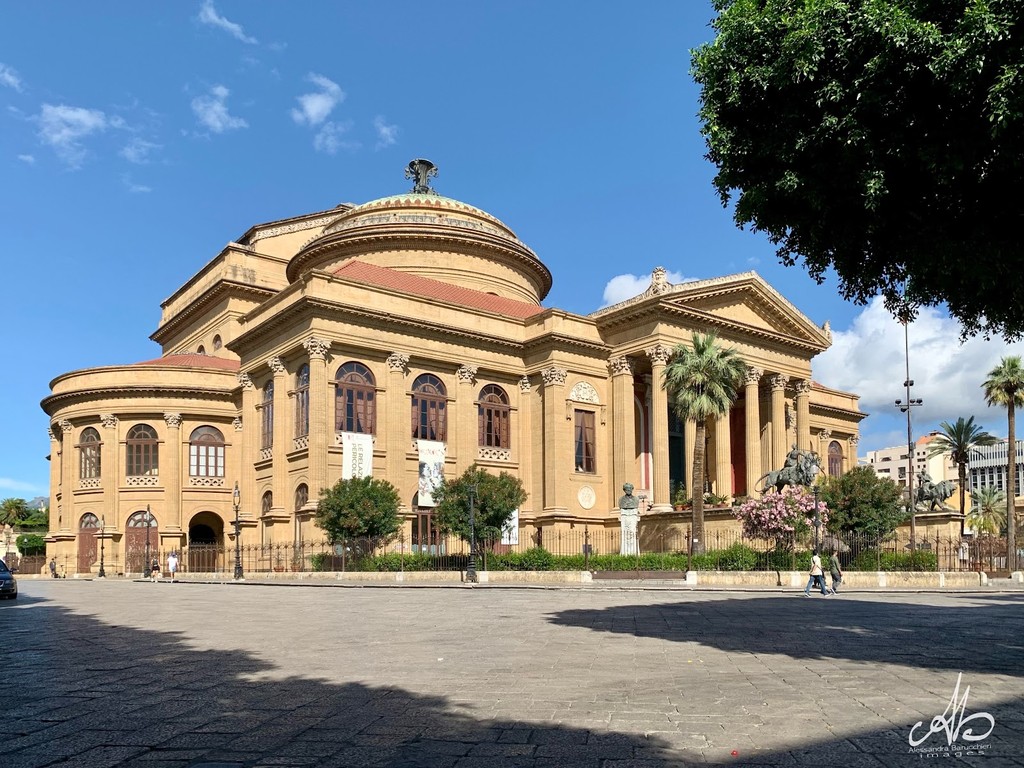
Teatro Massimo (Source: Google Maps)
Teatro Massimo, the largest opera house in Italy, is a neoclassical architectural masterpiece located in Palermo. Opened in 1897, it is renowned for its exceptional acoustics and grand scale, capable of seating over 1,300 spectators. The building features a majestic portico supported by 12 Corinthian columns and a stunning dome that rises high above the city. It has hosted countless operatic performances and is a cultural symbol of Palermo. The theater's interior is equally breathtaking, adorned with plush red velvet, intricate frescoes, and a magnificent chandelier. Teatro Massimo is not only a venue for opera and ballet but also a site for cultural events and festivals, making it a cornerstone of Palermo's artistic life.
Fontana Pretoria
Known as the "Fountain of Shame" for its nude statues, this ornate fountain is a must-see in the heart of Palermo.
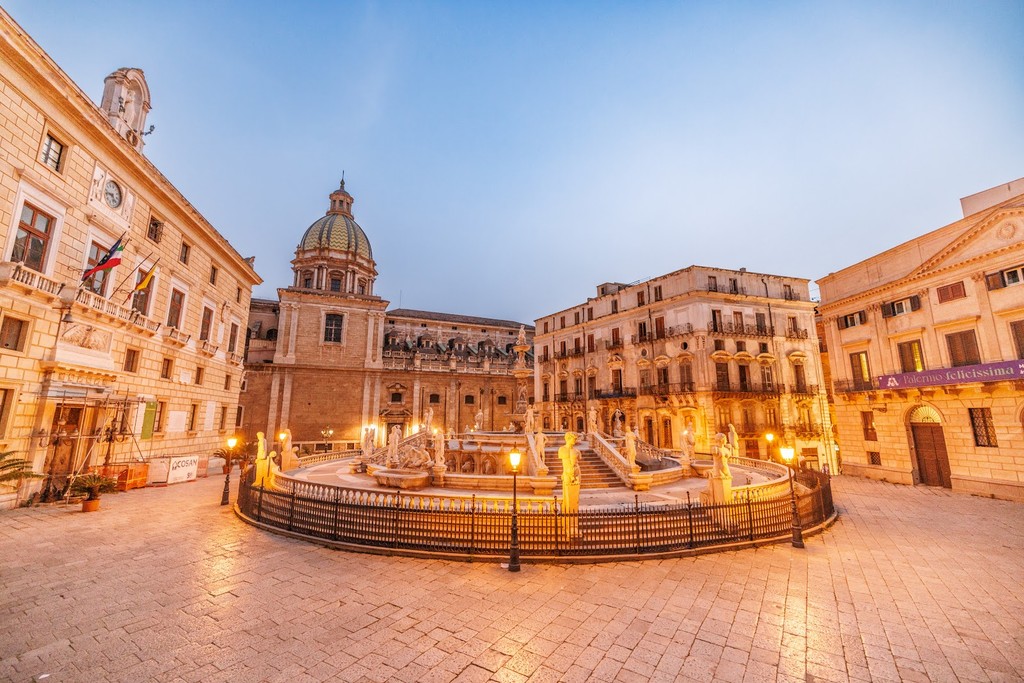
Fontana Pretoria (Source: Google Maps)
The Fontana Pretoria, also known as the "Fountain of Shame," is an iconic landmark in Palermo, completed in 1583. This elaborate fountain is adorned with numerous statues of mythological figures, including nymphs and gods, crafted from white marble. It was originally designed for the city of Florence but was relocated to Palermo, where it became a focal point in the Piazza Pretoria. The fountain's intricate design and the nudity of its statues sparked controversy, earning it its infamous nickname. The water cascades from various tiers, creating a stunning visual effect, especially when illuminated at night. The Fontana Pretoria exemplifies the Renaissance art style and reflects the cultural influences of the time, serving as a reminder of Palermo's rich artistic heritage.
Church of Santa Maria dell'Ammiraglio (La Martorana)
Explore this stunning church known for its remarkable Byzantine mosaics and rich history.
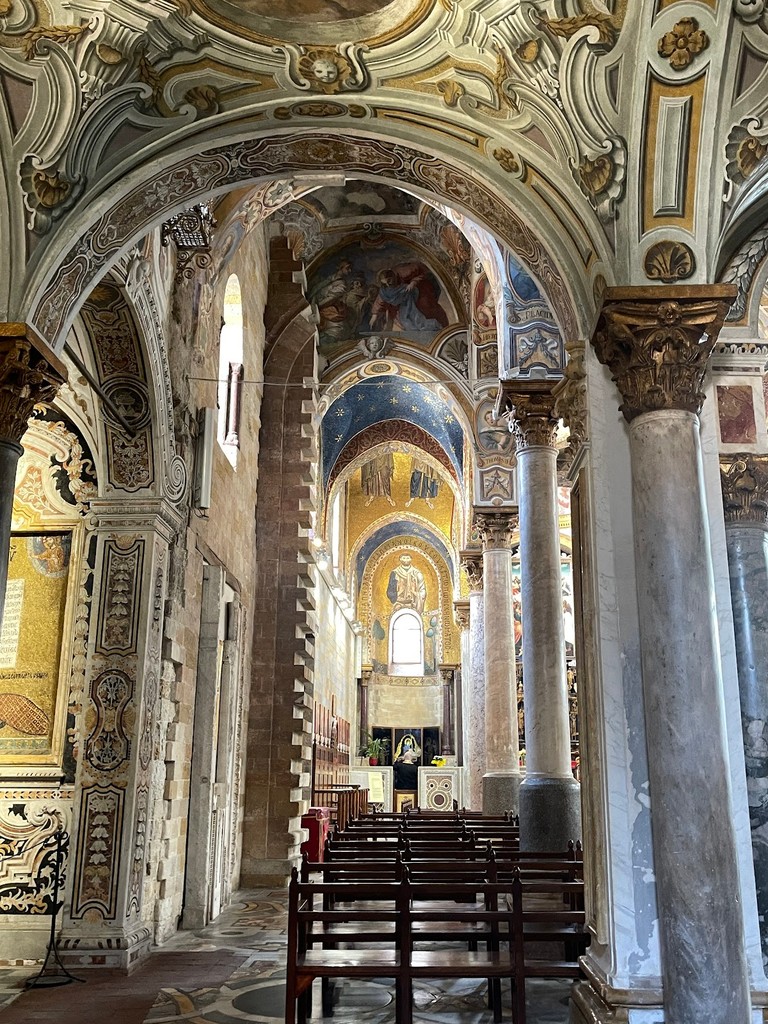
Church of Santa Maria dell'Ammiraglio (La Martorana) (Source: Google Maps)
The Church of Santa Maria dell'Ammiraglio, commonly known as La Martorana, is a stunning example of Byzantine architecture in Palermo, dating back to 1143. Originally built for the Admiral George of Antioch, the church showcases exquisite mosaics that are among the finest in the world. The interior features a blend of architectural styles, including Norman and Arabic influences, which reflect the diverse cultural heritage of Sicily. The most remarkable aspect of La Martorana is its magnificent mosaics, depicting biblical scenes and figures, crafted with gold and vibrant colors. The church is also home to a beautiful baroque bell tower, added in the 18th century, and a serene courtyard adorned with palm trees. La Martorana is not only a religious site but also a testament to Palermo's historical significance as a crossroads of cultures.
Piazza Bellini
Surrounded by beautiful churches, this picturesque square offers a glimpse into Palermo's diverse architectural styles.
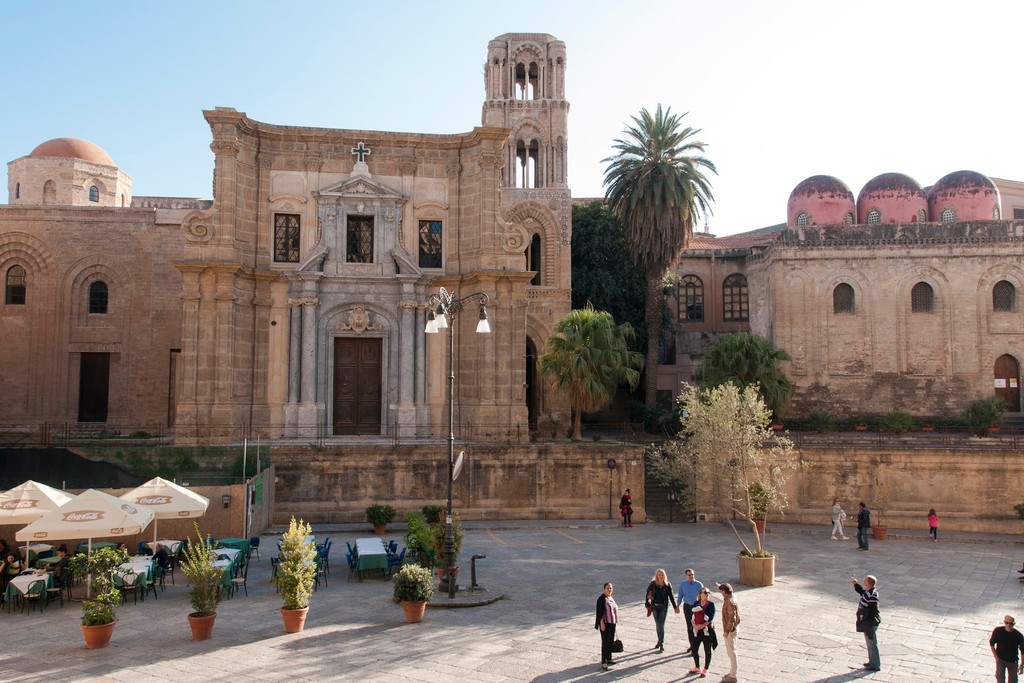
Piazza Bellini (Source: Google Maps)
Piazza Bellini is a picturesque square in Palermo, surrounded by remarkable churches and vibrant streets, offering a glimpse into the city's diverse architectural styles. The square is home to several significant landmarks, including the Church of San Cataldo, known for its distinctive red domes and Arab-Norman architecture, and the Church of Santa Maria dell'Ammiraglio (La Martorana), famous for its stunning mosaics. The piazza serves as a cultural hub, where locals and tourists gather to enjoy the lively atmosphere, street performances, and outdoor cafes. Its cobblestone streets are lined with historical buildings, making it an ideal spot for photography and leisurely strolls. Piazza Bellini is a testament to Palermo's rich history and cultural vibrancy, encapsulating the essence of the city's charm.
Quattro Canti
This Baroque square, officially known as Piazza Vigliena, is a perfect intersection of historic Palermo, marked by its beautiful fountains and statues.
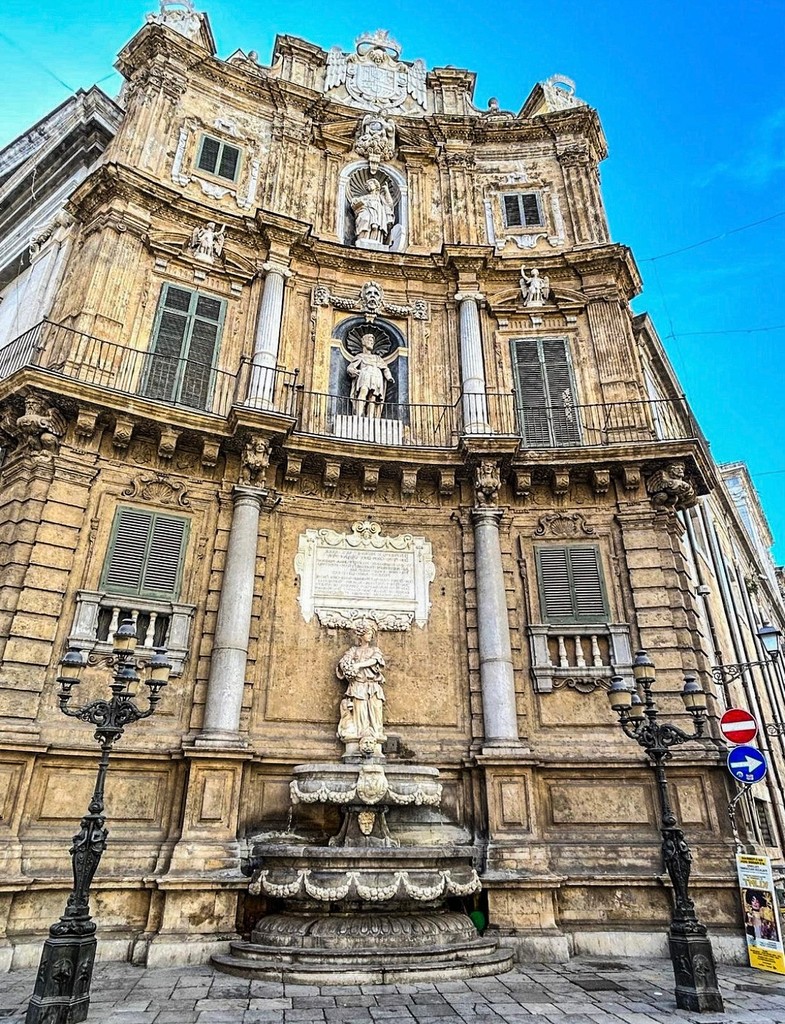
Quattro Canti (Source: Google Maps)
Quattro Canti, also known as Piazza Vigliena, is a stunning Baroque square located at the intersection of two major streets in Palermo. Built in the early 17th century, it features four grand facades adorned with statues of the Spanish kings, as well as allegorical representations of the four seasons and the four patron saints of Palermo. The square is beautifully designed, with intricate fountains and decorative elements that showcase the opulence of Baroque architecture. Quattro Canti serves as a central point in the city, connecting various neighborhoods and attracting both locals and tourists. It is a popular gathering place, often hosting events and performances. The square's unique layout and artistic embellishments make it a remarkable example of Palermo's architectural heritage and a must-see for visitors.
Palermo Cathedral
Visit the grand Palermo Cathedral, a blend of architectural styles reflecting the city's complex history.
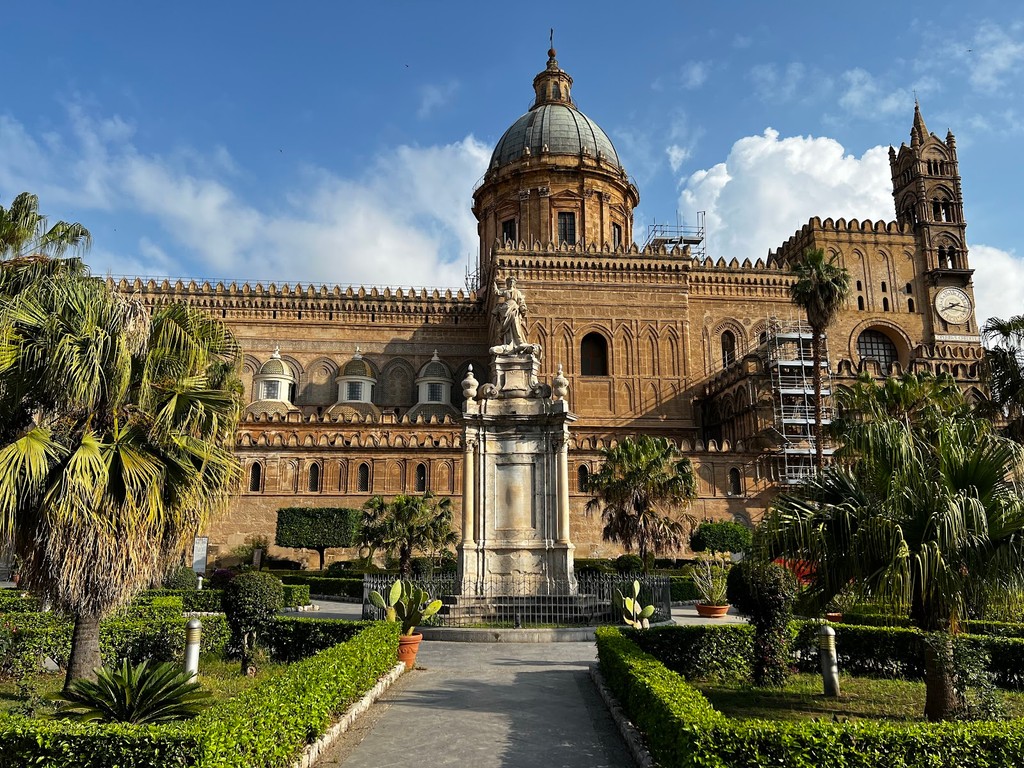
Palermo Cathedral (Source: Google Maps)
The Palermo Cathedral, a magnificent blend of architectural styles, is an iconic landmark that reflects the city's complex history. Originally built in the 12th century, the cathedral has undergone numerous renovations and expansions, resulting in a unique fusion of Norman, Gothic, and Baroque elements. Its most striking feature is the impressive façade, adorned with intricate carvings and a series of spires. Inside, visitors can admire the stunning chapels, each showcasing different artistic styles and historical significance. The cathedral is also home to the royal tombs, including that of Emperor Frederick II, adding to its historical importance. The interior boasts beautiful frescoes, ornate altars, and a breathtaking wooden ceiling. The Palermo Cathedral is not only a place of worship but also a symbol of the city’s rich cultural heritage and a testament to its architectural evolution.
Palazzo dei Normanni (Palace of the Normans)
Discover the rich history and stunning mosaics of the oldest royal residence in Europe.
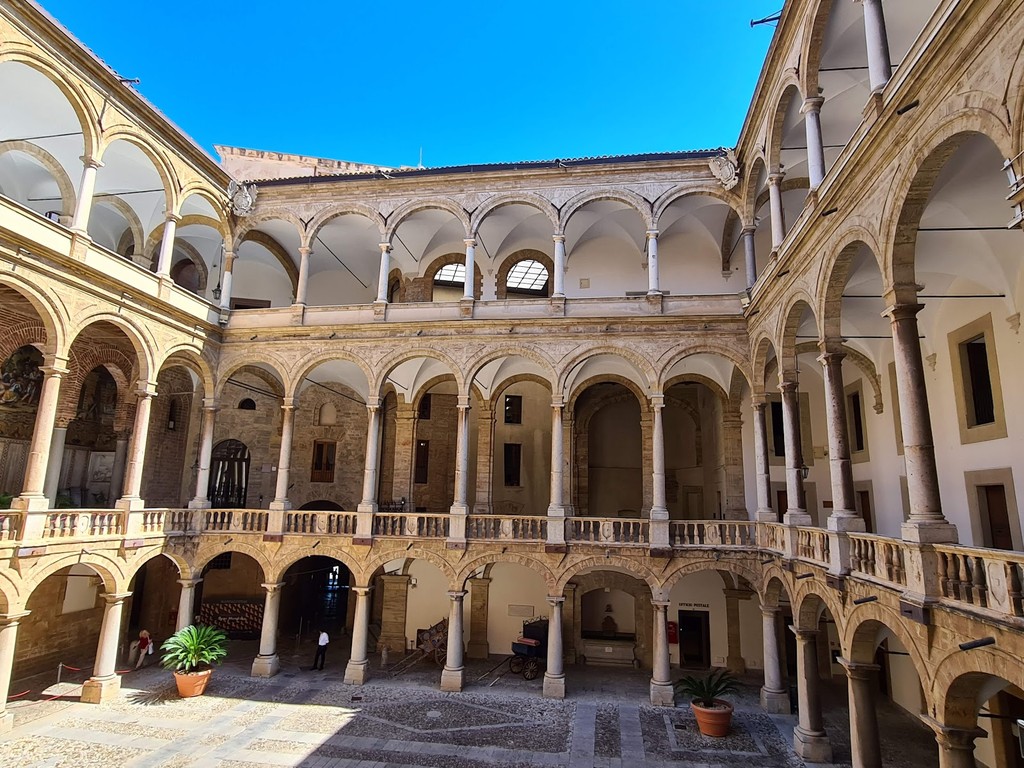
Palazzo dei Normanni (Palace of the Normans) (Source: Google Maps)
The Palazzo dei Normanni, or Palace of the Normans, is one of the oldest royal residences in Europe, with a history dating back to the 9th century. Initially built by the Arabs, it was later expanded by the Normans, who transformed it into a magnificent palace. The architectural style reflects a blend of Islamic, Norman, and Byzantine influences, making it a unique example of cultural fusion. The palace is renowned for its stunning interiors, particularly the Cappella Palatina, which features exquisite mosaics and intricate wooden ceilings. The palace served as the seat of the Sicilian kings and has witnessed many significant historical events. Today, it houses the Sicilian Regional Assembly and is open to the public, allowing visitors to explore its rich history and architectural beauty. The Palazzo dei Normanni stands as a symbol of Palermo's royal heritage and political significance.
Cappella Palatina
Located within the Palazzo dei Normanni, this chapel is renowned for its exquisite mosaics and intricate design.
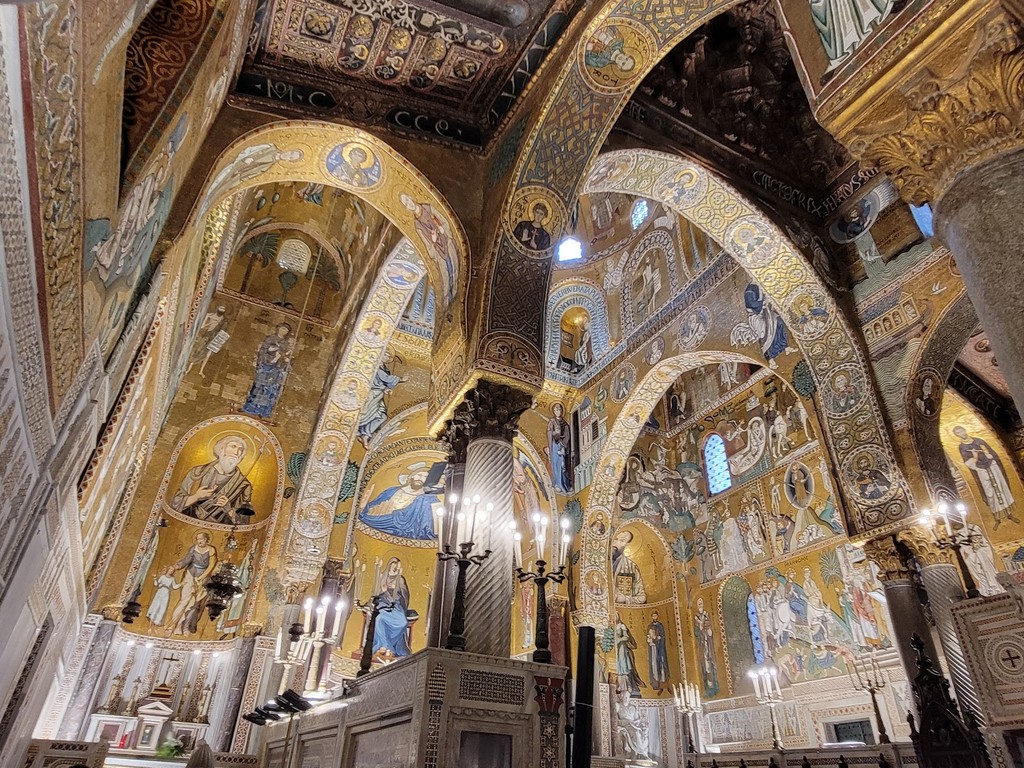
Cappella Palatina (Source: Google Maps)
The Cappella Palatina, located within the Palazzo dei Normanni, is a breathtaking chapel known for its exquisite mosaics and intricate design. Built in the 12th century under the reign of Roger II, the chapel is a prime example of Arab-Norman architecture, showcasing a harmonious blend of Islamic and Christian artistic influences. The interior is adorned with stunning gold mosaics depicting biblical scenes, saints, and ornate geometric patterns that create a dazzling visual experience. The wooden ceiling, intricately carved and painted, adds to the chapel's grandeur. The Cappella Palatina served as a private place of worship for the kings of Sicily and remains a significant religious site today. Its architectural beauty and historical significance make it a must-visit destination for anyone exploring Palermo's rich cultural heritage.
San Giovanni degli Eremiti
Visit this serene church and former monastery, known for its red domes and beautiful gardens.
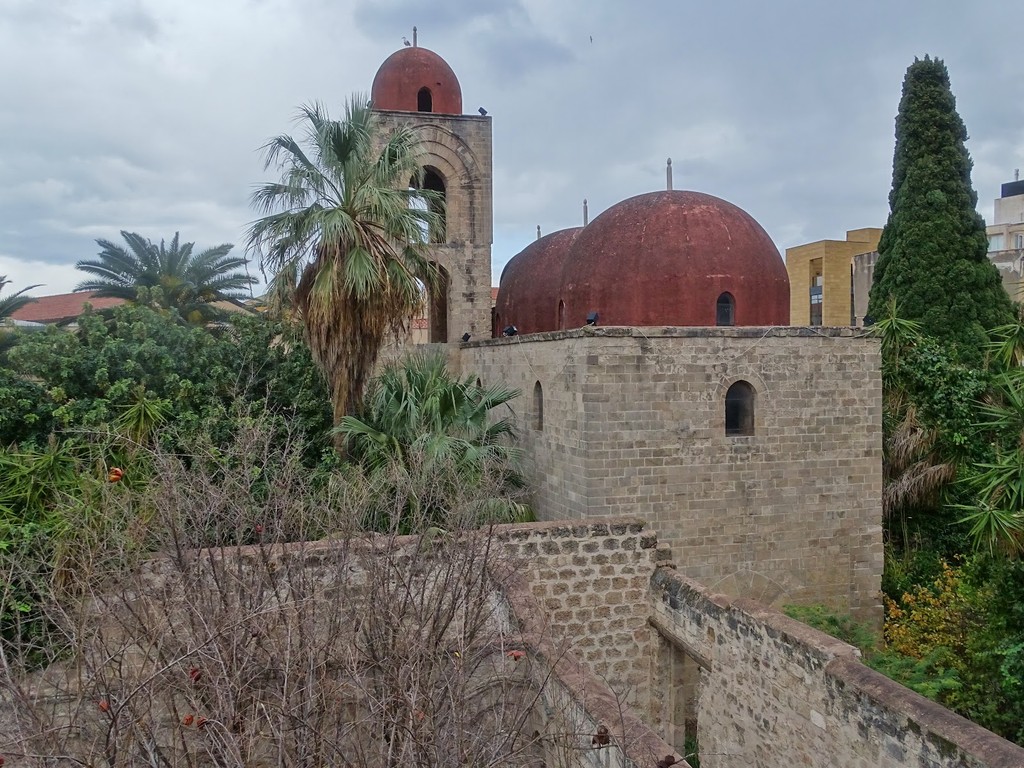
San Giovanni degli Eremiti (Source: Google Maps)
San Giovanni degli Eremiti is a serene church and former monastery in Palermo, renowned for its striking red domes and tranquil gardens. Built in the 12th century, the church showcases a unique blend of Arab and Norman architectural styles, reflecting Sicily's diverse cultural influences. The most distinctive feature is its five red domes, which stand out against the backdrop of the Palermo skyline. Inside, the church is simple yet beautiful, with remnants of ancient frescoes and a peaceful atmosphere that invites reflection. The surrounding gardens, filled with palm trees and flowers, provide a serene escape from the bustling city. San Giovanni degli Eremiti was originally a Benedictine monastery and played a significant role in the religious life of the region. Today, it serves as a symbol of Palermo's rich history and architectural diversity.
Ballarò Market
Immerse yourself in the vibrant atmosphere of this historic market, offering a variety of local produce and street food.
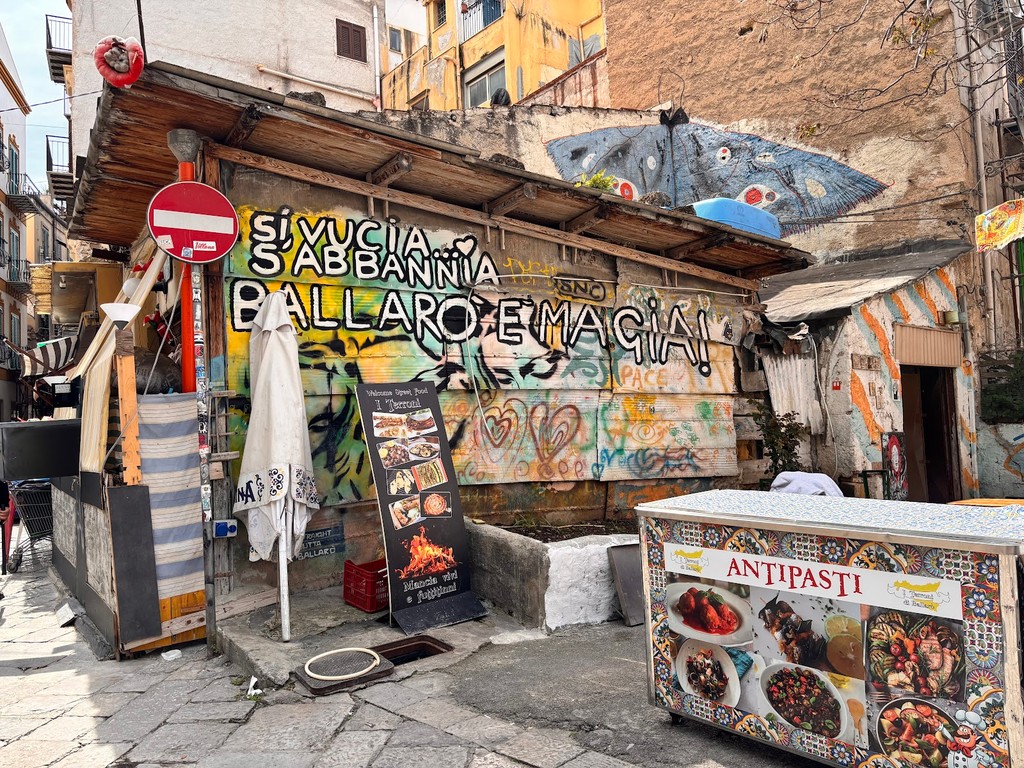
Ballarò Market (Source: Google Maps)
Ballarò Market is one of Palermo's oldest and most vibrant markets, offering a sensory explosion of sights, sounds, and flavors. Established in the Arab period, this historic market is a hub of local life, where vendors sell fresh produce, seafood, meats, and a variety of street food. The colorful stalls and lively atmosphere reflect the rich culinary traditions of Sicily, making it a must-visit for food lovers. Visitors can sample traditional dishes such as arancini and panelle while immersing themselves in the bustling environment. The market is not only a place to shop but also a cultural experience, with local artisans selling handmade crafts and souvenirs. Ballarò Market embodies the spirit of Palermo, showcasing the city's diverse food culture and vibrant community life.
Antica Focacceria San Francesco
Take a break to sample traditional Sicilian street food at this historic eatery, known for its authentic panelle and arancini.
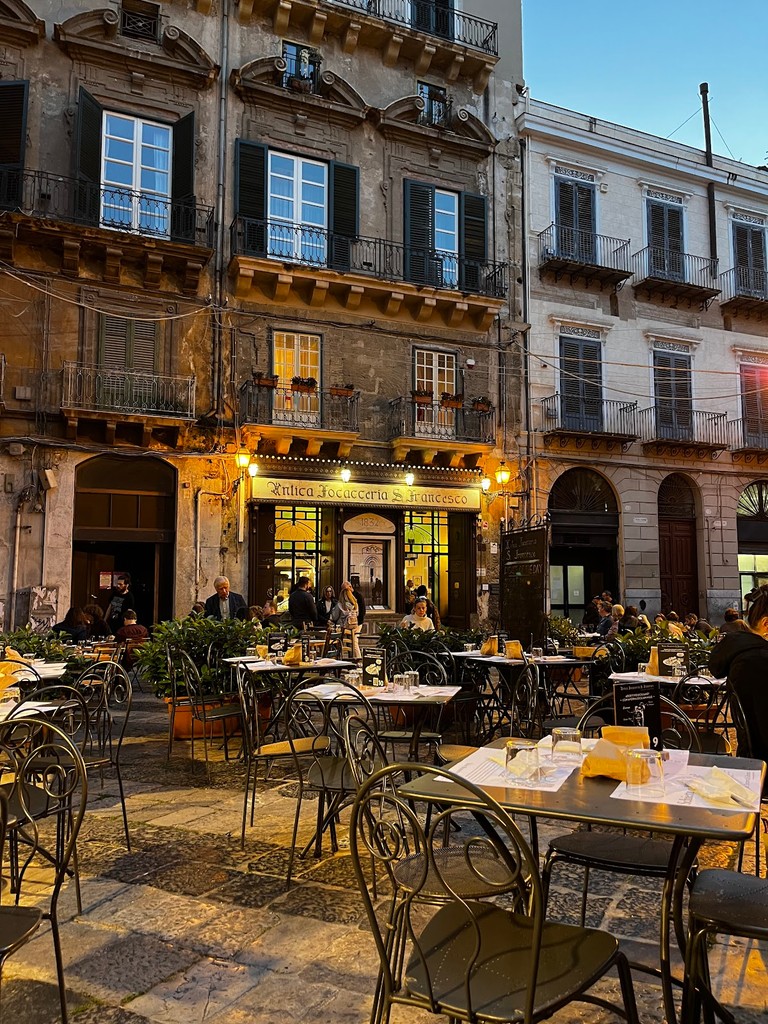
Antica Focacceria San Francesco (Source: Google Maps)
Osteria Ballarò
Conclude your tour with a meal at this charming restaurant, offering a menu of traditional Sicilian dishes made with fresh, local ingredients.
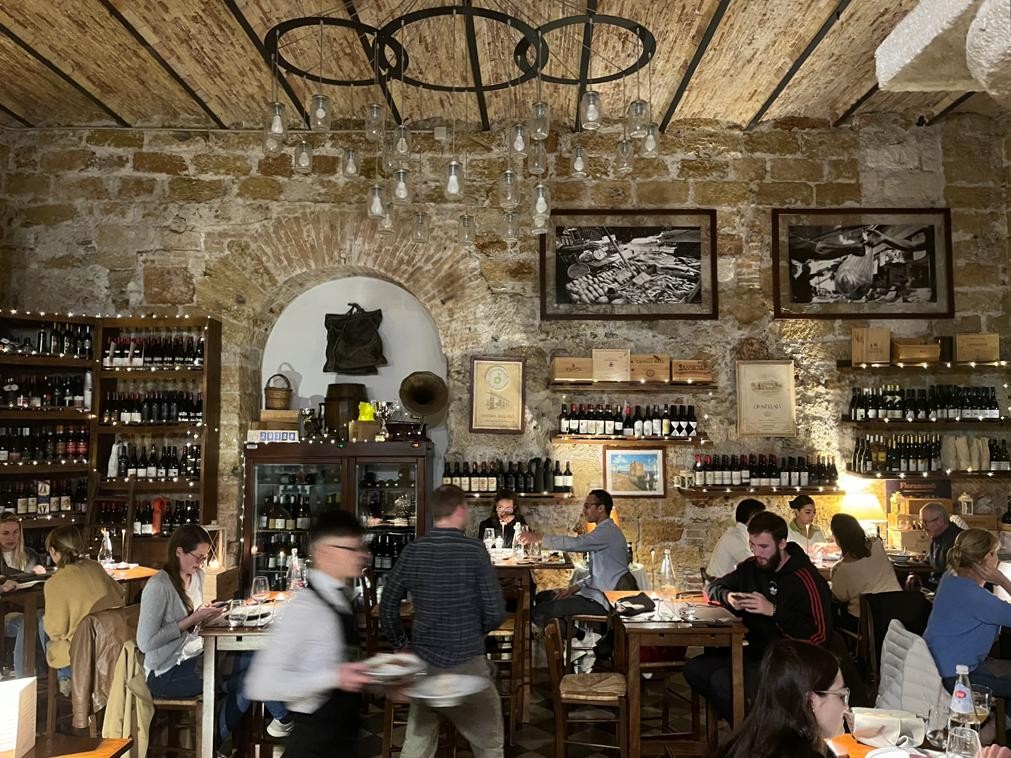
Osteria Ballarò (Source: Google Maps)

Your travels, your rules.
Create your own Free Walking Tours.
Set your preferences, distances and anything you want to do or see.
Completely free, no payment required.